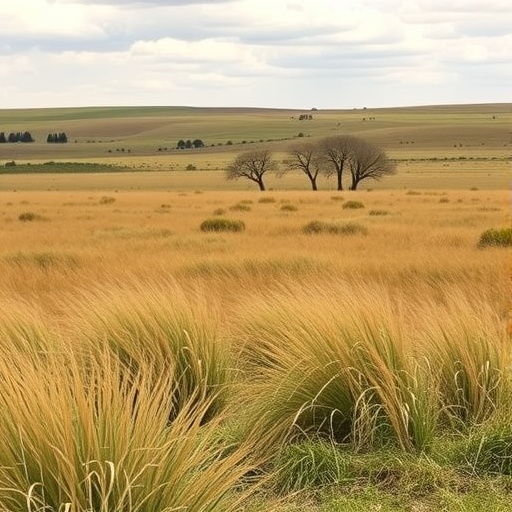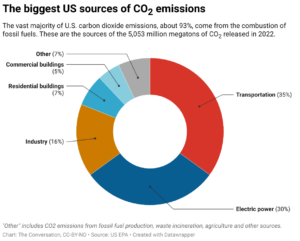As Sea Level Rises; Suffolk To Study Shoring Up Southold’s Route 48 – East End Beacon

Suffolk County Initiative to Enhance Coastal Infrastructure Resilience in Alignment with Sustainable Development Goals
A report on Suffolk County’s strategic measures to address the increasing vulnerability of critical coastal infrastructure, specifically County Route 48 in Southold, to the impacts of climate change. The initiative is framed by a commitment to achieving the United Nations Sustainable Development Goals (SDGs), particularly those concerning infrastructure, climate action, and environmental protection.
Strategic Infrastructure Adaptation and SDG 9
Vulnerability of Critical Transportation Arteries
County Route 48, a primary east-west thoroughfare on the North Fork, has been identified as critical emergency infrastructure for the Town of Southold. Its coastal sections are increasingly at risk.
- The easternmost portions of Route 48, adjacent to Hashamomuck Cove and Hashamomuck Pond, are highly susceptible to coastal flooding.
- This vulnerability is projected to intensify significantly due to sea-level rise and more severe storm events.
- A parallel thoroughfare, New York State Route 25, also faces similar flooding risks in certain areas, compounding the region’s infrastructure challenges.
Projected Climate Impacts and Proposed Interventions
Suffolk County has allocated capital funding to study and implement resilience measures based on scientific climate projections. This proactive planning directly supports SDG 9 (Industry, Innovation and Infrastructure) by focusing on developing quality, reliable, sustainable, and resilient infrastructure.
- Climate Projections: Officials anticipate a sea-level rise of 16 inches by 2050 and up to 34 inches by 2100 at this location.
- Funding: A sum of $2 million has been earmarked in the capital budget to fund a comprehensive resiliency study for Route 48 and other priority roads.
Fostering Sustainable Communities and Climate Action (SDG 11 & SDG 13)
Priority Sites for Resilience Projects
The Suffolk County Resiliency Study has identified key locations requiring urgent intervention to mitigate the impacts of climate change. This targeted approach aligns with SDG 13 (Climate Action) by strengthening resilience and adaptive capacity to climate-related hazards and natural disasters.
- County Road 48 (The North Road), Southold
- County Road 60 (Noyac-Long Beach Road), connecting Noyac to North Haven
- County Road 96, West Babylon
Integrated Approach to Climate Adaptation
The project’s core objective is to protect communities from climate-related disruptions, thereby contributing to SDG 11 (Sustainable Cities and Communities). By safeguarding essential transportation links, the initiative ensures continued access to services and enhances disaster preparedness, directly addressing Target 11.5, which aims to significantly reduce the impact of disasters.
Commitment to Ecosystem-Based Solutions (SDG 14 & SDG 15)
Nature-Based Solutions for Coastal Protection
The county’s strategy emphasizes environmentally sustainable methods over traditional hard engineering. This approach supports SDG 14 (Life Below Water) and SDG 15 (Life on Land) by conserving and restoring vital coastal and wetland ecosystems.
- The resiliency study recommends a combination of “roadway raising” and “living shoreline/nature-based solutions.”
- A separate but related project in the capital budget includes the restoration of 80 acres of wetlands at Cupsogue Beach in Westhampton Beach.
- These methods recognize the failure of repetitive, short-term solutions, such as the repeated loss of replenished sand at Town Beach following nor’easters.
Local Regulatory Measures for Wetland Preservation
In parallel, Southold Town officials are considering regulatory updates to enhance environmental protection.
- The Southold Town Trustees have proposed amending the town’s wetlands code to increase the required setback for swimming pools from 50 to 60 feet.
- This measure is described as a prudent step towards “coastal retreat” and anticipates future environmental pressures, aligning with the conservation goals of SDG 14 and SDG 15.
Collaborative Governance for Sustainable Development (SDG 17)
Inter-Agency and Governmental Partnership
The success of this resilience initiative hinges on robust collaboration between various governmental bodies, exemplifying SDG 17 (Partnerships for the Goals). Effective public partnerships are essential for implementing integrated climate adaptation strategies.
- The project involves close coordination between the Suffolk County Acting Chief Engineer, the Suffolk County Legislature, and the Suffolk County Executive’s office.
- These county-level entities are working directly with the Southold Town Supervisor, Town Board, and Highway Superintendent.
- Furthermore, Southold Town is actively engaging with New York State representatives to ensure a coordinated resilience effort across both county- and state-owned infrastructure.
SDGs Addressed in the Article
SDG 9: Industry, Innovation and Infrastructure
- The article focuses heavily on the vulnerability of critical infrastructure, specifically County Route 48, which is described as a “critical emergency infrastructure for the Town of Southold.” The need to make this road resilient against coastal flooding and storms is a central theme.
SDG 11: Sustainable Cities and Communities
- The efforts described aim to protect communities from the impacts of climate change. The article mentions that the Suffolk County Resiliency Study provides a “roadmap for the county to mitigate the impact of storms on its infrastructure and the communities that rely on it.” This directly relates to making human settlements safer and more resilient.
SDG 13: Climate Action
- The entire premise of the article is based on taking action to combat the effects of climate change. It explicitly mentions threats like “coastal flooding, which is anticipated to worsen dramatically as sea levels rise and storms intensify.” The proposed solutions, such as raising roads and restoring wetlands, are climate adaptation measures.
SDG 14: Life Below Water
- The article discusses the protection and restoration of coastal ecosystems. It mentions “living shoreline/nature-based solutions,” the “restoration of 80 acres of wetlands at Cupsogue Beach,” and the ongoing issue of beach erosion at Town Beach. These actions are aimed at conserving marine and coastal ecosystems.
SDG 15: Life on Land
- The discussion extends to inland freshwater ecosystems. The Southold Town Trustees propose changes to the town’s wetlands code, including increasing the setback for pools from wetlands, which is an action to protect and conserve these specific ecosystems from development pressures.
Identified SDG Targets
Under SDG 9: Industry, Innovation and Infrastructure
- Target 9.1: Develop quality, reliable, sustainable and resilient infrastructure… to support economic development and human well-being.
- The article details plans to make County Road 48 more resilient. Suffolk County Acting Chief Engineer Alexander Prego states, “We do need to do something with this road,” highlighting the plan to study and fortify this critical infrastructure against future climate impacts.
Under SDG 11: Sustainable Cities and Communities
- Target 11.5: By 2030, significantly reduce… the number of people affected and… direct economic losses… caused by disasters, including water-related disasters.
- The focus on fortifying Route 48, one of only two main thoroughfares, is a direct attempt to prevent the community from being cut off during storms, thereby reducing the number of people affected by such disasters. The article notes the road “is possibly at risk of being destroyed during major coastal storms.”
- Target 11.b: …substantially increase the number of cities and human settlements adopting and implementing integrated policies and plans towards… adaptation to climate change, resilience to disasters…
- The article mentions the “Suffolk County Resiliency Study,” which provides a “roadmap” for mitigation. This study and the subsequent earmarking of funds represent the implementation of integrated plans for climate adaptation and disaster resilience.
Under SDG 13: Climate Action
- Target 13.1: Strengthen resilience and adaptive capacity to climate-related hazards and natural disasters in all countries.
- The entire initiative is an example of strengthening resilience. The article cites projected sea-level rise (“16 inches… by 2050”) as a key driver for the project and mentions specific adaptation strategies like “roadway raising and living shoreline/nature-based solutions.”
Under SDG 14: Life Below Water
- Target 14.2: …sustainably manage and protect marine and coastal ecosystems to avoid significant adverse impacts, including by strengthening their resilience, and take action for their restoration…
- The article mentions a project in the capital budget that “includes restoration of 80 acres of wetlands at Cupsogue Beach.” Furthermore, the recommendation to use “living shoreline/nature-based solutions” for road protection is a direct action to protect and strengthen coastal ecosystems.
Under SDG 15: Life on Land
- Target 15.1: …ensure the conservation, restoration and sustainable use of terrestrial and inland freshwater ecosystems and their services, in particular… wetlands…
- The proposal by the Southold Town Trustees to change “the setback from wetlands for pools from 50 to 60 feet” is a specific policy action aimed at the conservation of inland wetlands. Trustee President Glenn Goldsmith calls this a prudent step towards “a little bit of coastal retreat.”
ol>
Implied Indicators for Measuring Progress
Indicators for Infrastructure and Climate Resilience (SDGs 9, 11, 13)
- Financial Investment: The article explicitly states that “the county has earmarked $2 million in capital funding to study making County Road 48 and two other county roads more resilient.” This serves as a direct indicator of financial commitment to resilience.
- Risk Assessment Data: The use of specific climate projections, such as “an expectation of 16 inches of sea level rise at this location” by 2050 and “up to 34 inches, almost three feet” by 2100, serves as an indicator of the level of risk being addressed.
- Number of Adopted Policies/Plans: The existence of the “Suffolk County Resiliency Study” and the town’s work to “catalogue the flooding risks on town-owned roads” are indicators of strategic planning for disaster resilience.
Indicators for Ecosystem Protection (SDGs 14, 15)
- Area of Ecosystems Restored: The plan for the “restoration of 80 acres of wetlands at Cupsogue Beach” is a quantifiable indicator of progress in ecosystem restoration.
- Policy and Regulatory Changes: The proposal to increase the setback for pools from wetlands from 50 to 60 feet is a specific, measurable policy change that can be tracked as an indicator of enhanced environmental protection.
- Qualitative Environmental State: The anecdotal evidence of beach degradation (“When we were kids, Town Beach was huge… it’s not coming back”) serves as a qualitative baseline indicator against which the success of future restoration efforts, like living shorelines, can be measured.
Summary of SDGs, Targets, and Indicators
| SDGs | Targets | Indicators Identified in the Article |
|---|---|---|
| SDG 9: Industry, Innovation and Infrastructure | 9.1: Develop quality, reliable, sustainable and resilient infrastructure. | – $2 million in capital funding earmarked for studying road resilience. – Identification of three priority roads for resilience projects. |
| SDG 11: Sustainable Cities and Communities | 11.5: Reduce the impact of disasters on people and economies. 11.b: Implement integrated policies and plans for climate change adaptation and disaster resilience. |
– Implementation of the “Suffolk County Resiliency Study.” – Town-level efforts to catalogue flooding risks on local roads. |
| SDG 13: Climate Action | 13.1: Strengthen resilience and adaptive capacity to climate-related hazards. | – Planning based on sea-level rise projections (16 inches by 2050, 34 inches by 2100). – Proposed adaptation solutions like “roadway raising” and “living shoreline/nature-based solutions.” |
| SDG 14: Life Below Water | 14.2: Sustainably manage and protect marine and coastal ecosystems. | – Plan for the restoration of 80 acres of wetlands at Cupsogue Beach. – Anecdotal evidence of beach erosion at Town Beach indicating a need for restoration. |
| SDG 15: Life on Land | 15.1: Ensure the conservation and sustainable use of terrestrial and inland freshwater ecosystems, especially wetlands. | – Proposal to change the setback for pools from wetlands from 50 to 60 feet. |
Source: eastendbeacon.com

What is Your Reaction?
 Like
0
Like
0
 Dislike
0
Dislike
0
 Love
0
Love
0
 Funny
0
Funny
0
 Angry
0
Angry
0
 Sad
0
Sad
0
 Wow
0
Wow
0













































































